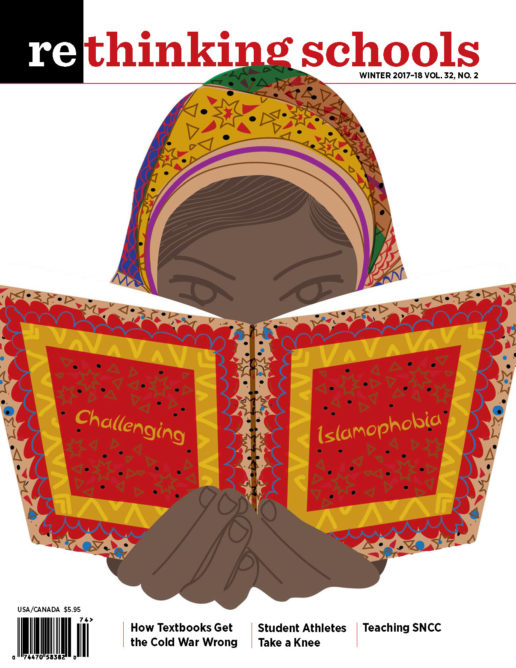Our Winter 2017 Picks for Books, Videos, Websites, and Other Social Justice Education Resources 32.2
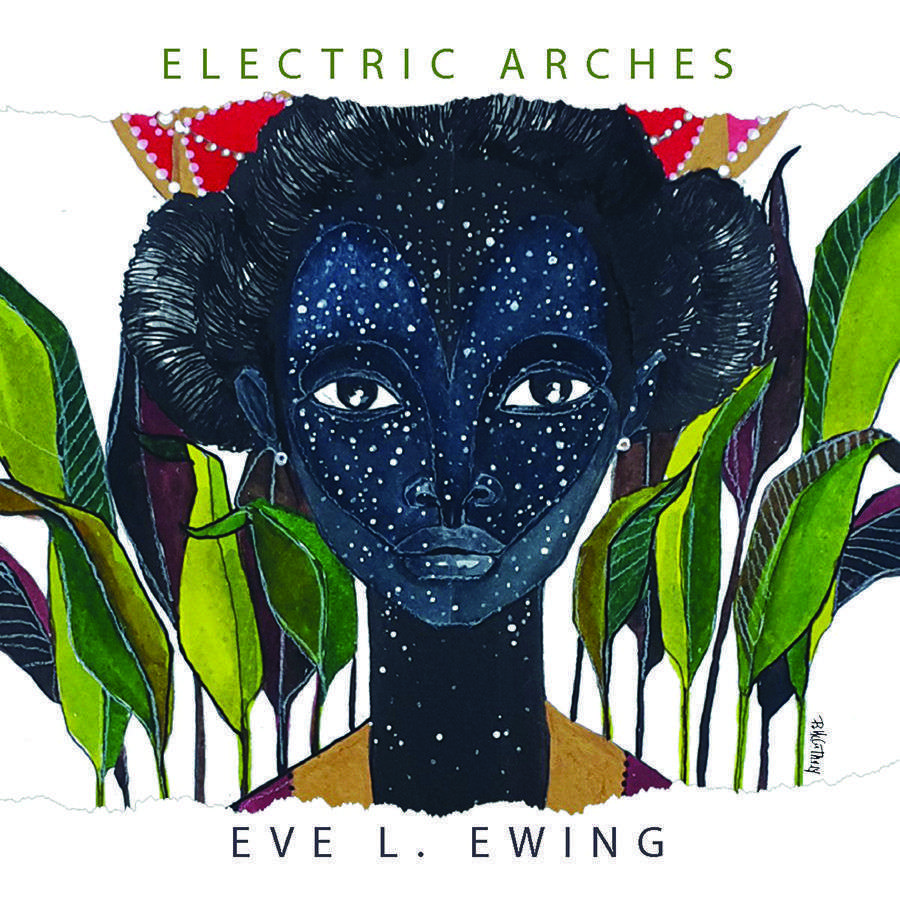
Curriculum
A Beautiful Ghetto
By Devin Allen
(Haymarket Books, 2017)
124 pp.
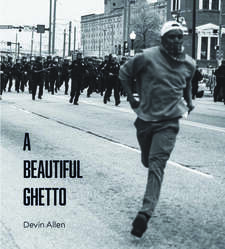
Devin Allen’s A Beautiful Ghetto is more than a collection of award-winning photographs. Allen’s book documents Black life in Baltimore before and after the police murder of Freddie Gray and the uprising it produced through short essays, poetry, and stunning images. The book is a worthwhile addition to any classroom attempting to learn from the Black Lives Matter movement and about Black life today. Several essays, including Keeanga-Yamahtta Taylor’s “The Boisterous Demand of Black Baltimore,” give essential background for those less familiar with the 2015 uprising in Baltimore. The poetry by Tariq Tour that dots the book — in particular “Poverty Is Violence” and “April 27th,” which focuses on Freddie Gray’s murder — are worth analyzing with students. But most of all, the incredible photographs by Baltimore native Devin Allen are powerful resources for the classroom. The photographs are split into two sections: “Ghetto,” which highlights “a beauty that is often overlooked and unappreciated” in Baltimore’s Black community, and “Uprising,” which documents the Black revolt after Freddie Gray’s murder. A gallery walk of photographs from the book would produce deep discussion in many classrooms.
Electric Arches
By Eve L. Ewing
(Haymarket Books, 2017)
94 pp.
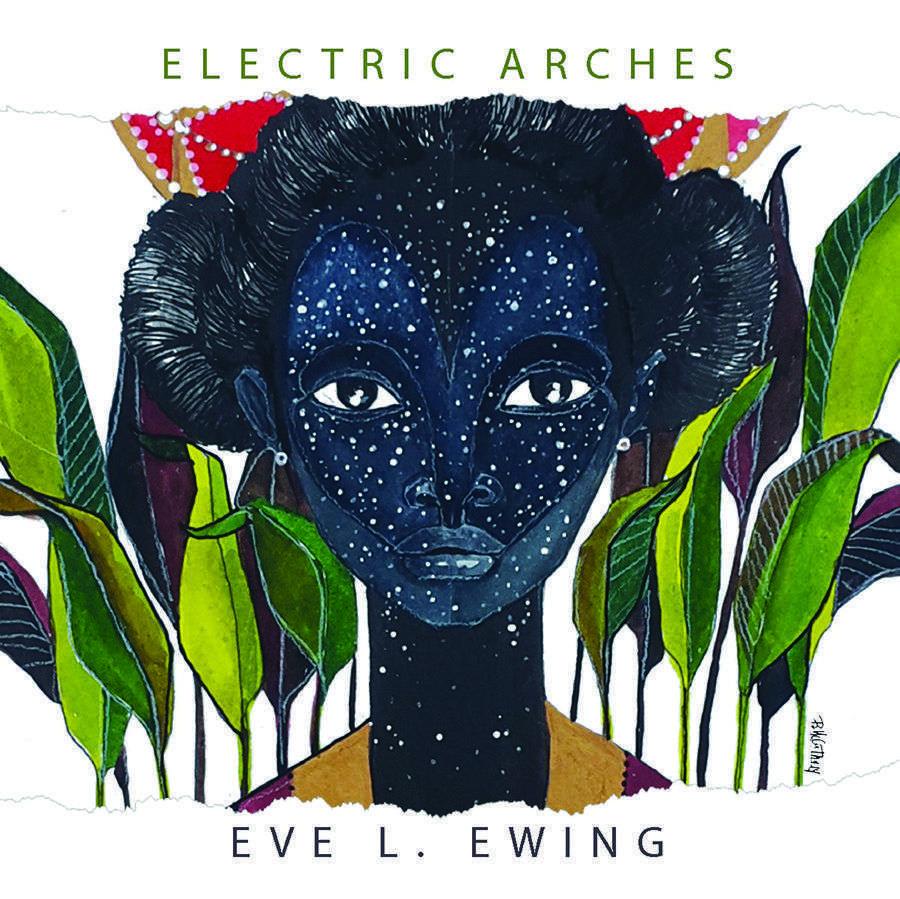
“Every story in it is absolutely true.” This is from Eve Ewing’s Note of Introduction to Electric Arches, her debut book of poetry, prose, collage, and handwritten notes. Truth in Ewing’s hands is dynamic, including the real and imagined, the past, present, and future, and always, the possibility of a just world. Her “retellings” reflect this dynamism. In one, Ewing shares a painful account of the first time she was called a racial slur. Interrupting this typewritten story with her own handwriting, Ewing leads the reader into an imagined, alternative ending involving a flying bike, a giant net, and a delicious popsicle. In a recent interview, Ewing explained the origin of these retellings. “When I was a kid, whenever I woke up from a nightmare, my mom would ask me to finish it. She’d be like, ‘OK, and then what happened?’ and I would have to come up with some kind of ending, one that didn’t negate the thing that frightened me or the thing that had been scary, but allowed me to reassert some sort of agency.” Ewing’s writing pulses with that agency, as even a small sample of her titles attest: “why you cannot touch my hair,” “I come from the fire city,” “Shea Butter Manifesto,” “what I mean when I say I’m sharpening my oyster knife.” Ewing’s poems of childhood, place, identity, and daily life will serve as rich models for students and teachers pursuing writing that is both relevant and liberating.
The Era of Reconstruction: 1861-1900
By Gregory P. Downs and Kate Masur
(The National Park Service, 2017)
157 pp.
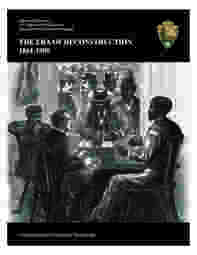
The Era of Reconstruction: 1861-1900, published by the National Park Service, is a useful resource for teachers and students. The majority of the booklet is an impressive bottom-up overview of the Reconstruction era broken into six major themes. If the textbook coverage of Reconstruction was as good as the National Park Service’s, students would learn a more complete and relevant history of the era. The booklet’s first four parts include sections that would be worthwhile to pull out for use in the classroom. In particular, the introduction is one of the best short overviews of Reconstruction that we’ve seen, emphasizing the role of ordinary people. Any teacher looking for a short overview of the time period would find this useful. “Part 3: Enfranchisement/New Democracy” is an in-depth look at the expansion of democracy during Reconstruction that could also be used in its entirety in a classroom.
Graphic Novel
When the Rules Aren’t Right: 7 Time Travel Tales of Activism
By Leslie Tolf
Illustrated by Sophie Geneva Page, Giselle Sarmiento, Molly Walsh, Alex Graudins, Veronica Agarwal, Haejin Park, and Madeline Zuluaga
(Bardo Press, 2016)
113 pp.
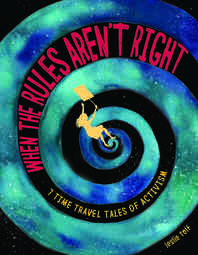
This is a delightful and inviting primer about the importance of organizing in the face of injustice. Told as a time-travel story of Emma, a teenage girl, we begin with a story from her grandmother about a women’s jewelry collective in India. We then travel with her to the Triangle Shirtwaist Factory in 1911, an ad agency in 1960s New York, a music studio in 1986 Los Angeles, a school in 2012 Chicago, a farmworker community in 1988 McFarland, California, and then back to the present. The book’s message is simple: When you see or experience something that is not fair, you should organize and act. The book’s illustrations are lively and colorful.
Policy
Why Are All the Black Kids Sitting Together in the Cafeteria? And Other Conversations About Race
By Beverly Daniel Tatum
(Basic Books, revised and updated: 2017)
464 pp.
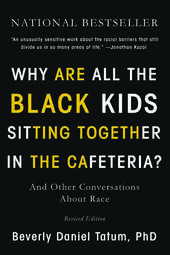
When it was first released in 2007, this book radically transformed how countless readers thought and talked about racial identity in the United States. Tatum spent two years on this new updated and expanded edition. She addresses the many setbacks of the past 20 years — the recession of 2008, mass incarceration, police shootings of African Americans, the rollback of Affirmative Action, and the early days of the Trump presidency. To balance these challenges, she ends with an epilogue called “Signs of Hope, Sites of Progress.” This is an ideal text for teacher and/or student reading and discussion groups.
Picture Book
Benny Doesn’t Like to Be Hugged
By Zetta Elliott
Illustrated by Purple Wong
(Rosetta Press, 2017)
42 pp.
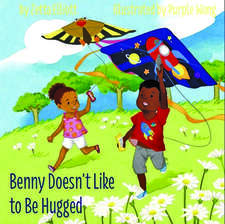
We learn about the things Benny likes (trains, cupcakes with sprinkles, shirts without wrinkles) from his elementary school friend who narrates the story. Interspersed with those likes are a few things he does not like, such as “being hugged.” Benny is autistic. This book is a wonderful vehicle for ensuring that teachers can address with other students the qualities and challenges autistic children face. The text is very easy for a beginning reader with one sentence per page. The illustrations reflect a diversity of identities including Muslim and Native American children.
Film
Backpack Full of Cash
Producers Sarah Mondale and Vera Aronow
backpackfullofcash.com
96 min.
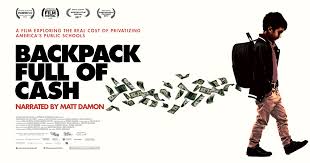
Like many public education supporters, Sarah Mondale and Vera Aronow became increasingly concerned in the last decade about attacks on public schools and teachers. They decided to do something about it. The result, five years in the making, is their documentary, Backpack Full of Cash.
Narrated by Matt Damon, the film explores the growing privatization of public schools, especially in urban districts serving predominantly students of color, and how such privatization starves public schools of needed resources. Filmed in Philadelphia, New Orleans, Nashville, and other cities in 2013-14, the film focuses primarily on the effect of privately run charter schools and, in New Orleans, publicly funded vouchers for private religious schools. It also touches on issues such as the obsession with standardized tests and attacks on teacher unions.
Rethinking Schools, in conjunction with Aronow and Mondale and with support from the Schott Foundation for Public Education, developed a downloadable 24-page discussion guide for the film. In addition to discussion questions, the guide includes background information, resources, and a special Frequently Asked Questions section, “Charters, Vouchers, and Public Schools,” which addresses common confusions about the causes and effects of privatization. The guide and stand-alone FAQ are available at rethinkingschools.org/backpack-full-of-cash. For a list of upcoming screenings, or to rent the film, check out the film’s website backpackfullofcash.com.

